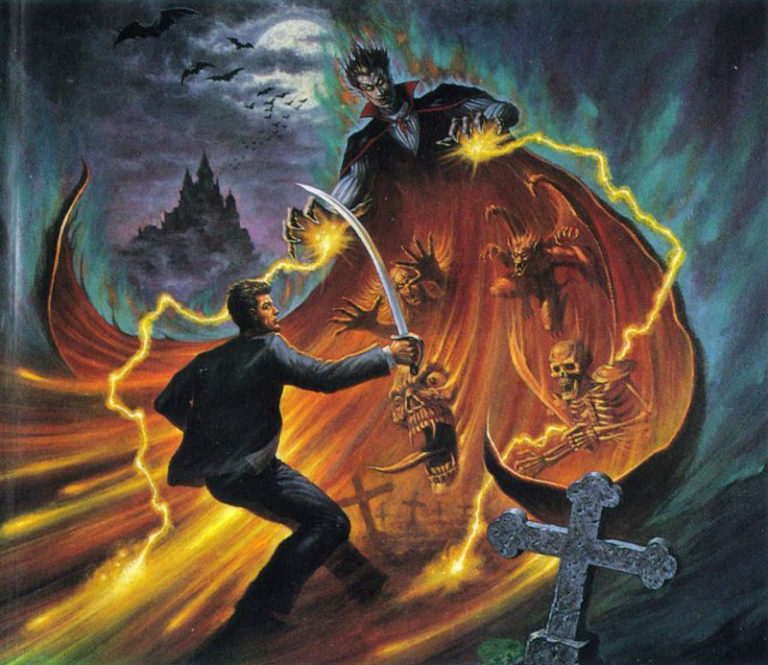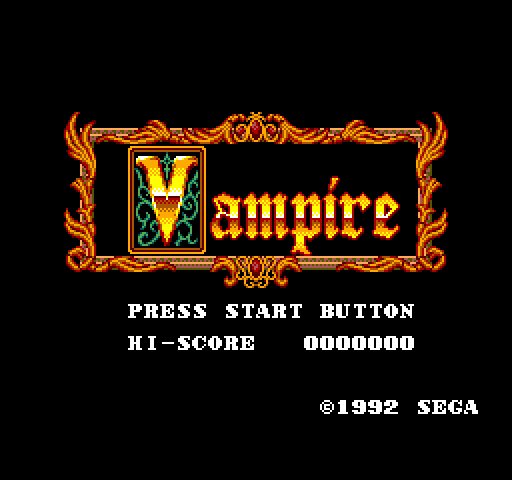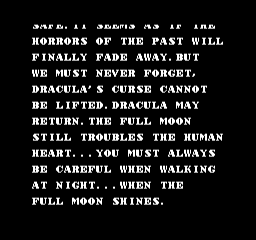Vampire: Master of Darkness

I was surprised to discover there was a Castlevania clone for the Sega Master System and Game Gear. This game takes so many elements from Castlevania that it could be considered a bootleg, although I personally wouldn’t make that accusation.

You play as a psychologist named Dr. Social. He gets instructions from his Ouija board to track down Jack the Ripper at the Thames River, which eventually leads him to fight through a castle to stop the resurrection of Dracula. The similarities between Castlevania and this game don't end there.
I want to state up front that while I’ll be poking fun at this game for ripping off so much from Castlevania, I’m not making any claims that the game is bad for that specific reason. I wouldn’t consider this game to be plagiarism. I was originally excited to play this because it was a Castlevania clone, and I might have skipped it otherwise. After all these years, the fact that this game is so derivative of the beloved vampire-killing franchise gives this title a special charm it otherwise wouldn’t have.
One innovation that makes this game stand out from Castlevania (and this game desperately needs any last bit of originality it can manage) is the 4 different main weapons you can find and equip. Instead of using a whip for the entire game, Dr. Social can use a knife, a sword, an axe, and a hammer. Unfortunately, this doesn’t really add any variety to the game because only two of the weapons are actually any good, and I would make the case that the hammer is the only one you should ever use.
When you start the game or resume after a death, the game gives you a knife as your main weapon, which has low damage, short range, and is the worst item in the game. Oddly enough the game keeps trying to give you the knife back as if there was any reason at all you’d want it. Perhaps they were trying to make it like the poison mushrooms in Super Mario Bros. The Lost Levels.
The knife can be a huge problem for the player because it tends to appear right before bosses, including the final boss, which can severely weaken you
.The axe is a viable option because it seems to deal the most damage, even though the range is about as bad as the knife. Dr. Social swings it over his head, but it really isn’t an overhead strike you can use for aerial enemies, except in certain strange circumstances when the game’s hitboxes do weird stuff:
The sword is okay, it has good range but deals terrible damage. You won’t be heavily disadvantaged if you accidentally pick one up, but you should avoid the sword in every case and instead opt for either the hammer or the axe.
In my opinion, the hammer is the only weapon you need to use for every single area of the game. It has good range combined with the second best damage of the four main weapons. Some enemies will require an extra hit to kill, but those few high health enemies aren’t that big of a threat. Just bonk them one more time. The hammer is balanced and reliable enough to get you through every threat in the game.
The way the game handles subweapons is a little different from Castlevania. You pick up a subweapon and it has its own ammo count which you can increase by getting the same powerup again. If you pick up a different subweapon, you lose all this accumulated ammo. You get powerups by breaking little floating masks instead of candles. And the level designer’s favorite thing to do apparently was put these masks right over pits and spikes, so you have to blindly grab them before you have time to figure out what you’re grabbing, which means you might pick up something you don't want.
It’s interesting how playing a game attempting to imitate Castlevania but having an inferior powerup system really made me realize how brilliant Castlevania really is. The universal Heart resource for subweapons is great because you can freely switch subweapons and experiment with different strategies. This game’s system isn’t an improvement.
I’m sure the subweapons in this game are more useful than I’m making them out to be, but I barely even used them for the entire game. The gun and the boomerang suck because their damage is so low. The bomb is actually good, and if I ever play this game again I’ll use it more. It travels in an upward arc like the Axe in Castlevania, though much slower. The stake does really good damage and can really help out with bosses, but it only starts to appear at the end of the game.
Make no mistake about Dr. Social, he’s an absolute tank. He’s got about as much defensive power as a fully geared-up Alucard from Symphony of the Night. To make things even easier on the player, this game is incredibly generous with health powerups. Remember in Castlevania when you’d strike at a wall and be disappointed the blocks didn’t break? Not in this game, just about everything that looks like it could be a breakable wall actually is, and most of the time there’s a health potion. You can really fumble your way through this game, get hit constantly, and still make it through to the end.
This isn’t a very difficult game, and it’s very short. Those two facts together mean you’re likely only going to ever play this once. Maybe someone out there can make a romhack that increases the difficulty.
This game is pretty fun for the most part. The level design is my biggest gripe, even though there’s also several instances of brilliant level design.
Of all the things this game copied from Castlevania, it loves stairs the most. There’s way more stairs in this game than even the stair-iest Castlevania game, and the real bummer is it doesn’t feature the upgraded stair mechanics from games like Castlevania IV or Rondo of Blood, such as being able to land on steps by jumping. You always have to start climbing from the bottom, as well as a very specific spot at the bottom. Combining stair climbing with combat doesn’t work quite like you’d expect, and leads to awkward moments. The stair climbing in this game is not so egregious that it ruins the entire game, but I definitely am not fond of it.
There’s some really weird leaps of faith in this game that end up with you hitting spikes. Spikes are just all over the place in bizarre places, and sometimes it seems you’re just supposed to hit them and jump out of them to get through a level. As already stated, Dr. Social can take a huge amount of hits, so that’s pretty much how you end up playing the game.
As for the good parts of the level design, I really enjoyed the branching paths of some of the levels. You can also find hidden shortcuts to help you finish the level faster. There’s also little challenge rooms that have a specific objective, like moving to one side of the screen to defeat an enemy that continuously spawns others.
The last level, the Labyrinth, is the best. It’s a big maze and you use trial and error to find the exit. Something about the way it was executed was really fun. Make sure to remember your path through the maze, because if you die on the boss you have to go through it again.
The writing in this game is pretty decent, and the cutscenes that play after you beat a boss are quick and enjoyable to read.

The problem with Vampire is how much it pales in comparison to the games it strives to imitate. Castlevania IV on the SNES was already out by this point, and this game’s very simplistic enemy and boss designs really look really amateurish by comparison. I don’t think you should always use direct comparison to other games in a review, but in the case of something like this, it’s definitely warranted. If Vampire: Master of Darkness was actually part of the Castlevania franchise, it would be the weakest in the series, maybe only beating out Castlevania II: Simon’s Quest.
So what did I think of Vampire: Master of Darkness? I spent the entire game agonizing over this question. While playing, I was constantly taking note of all the things in this game that suck, but I couldn’t deny that I was having fun anyways. It wasn't boring at all. The level design is the game’s weakest feature, but it wasn’t enough to turn me off the game entirely. The game ends on a very strong note, which is probably what made me ultimately arrive at a moderately positive impression of the game. I really enjoyed the last level and the final boss, and I finished the game in a good mood.
Then I played the Game Gear version, and it was a lot better. It’s essentially the same game, except the levels were redesigned to fit the smaller screen. A lot of the level design problems the Sega Master System version had weren’t present and it’s a much better experience. Something about the game works better with a tighter play area.
Castlevania fans will find it an amusing curiosity, and it’s definitely a game you want in your library if you own a Sega Master System or a Game Gear. The Game Gear version is the one I prefer, so go for that if you can.



